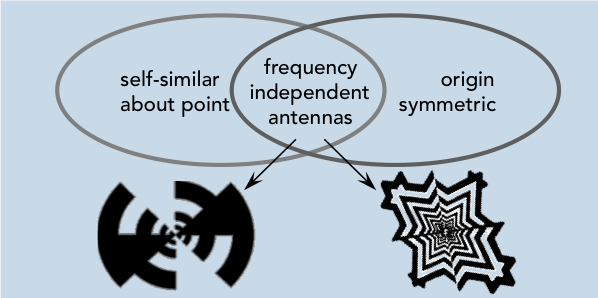Frequency Independence
Frequency independence is a fascinating characteristic of certain wideband antennas that display very similar radiation pattern, gain and impedance above a lower threshold frequency.
As with all things antennas, the answer lays in physics, and in this case the symmetries of Maxwell’s Equations. In the late 1950’s, V. H. Rumsey explored the spatial symmetries of Maxwell, showing that frequency independent antennas could be created by designs defined only by angles around a central point.
Decades later, Nathan Cohen noticed frequency independent behavior of some of his fractal antennas which possessed shapes that were certainly not based on angles only.
Resolving this dilemma required another look at the math. Astrophysics colleague Dr. R. Hohlfeld worked with Dr. Cohen in 1999 to show the previously discovered design rules were part of the answer, but not the whole answer.
Extending the Analysis
Extending Rumsey’s spatial invariance analysis of Maxwell’s equation to include the properties of scaling inversion and time reversal, a new and more encompassing rule emerges. See the paper for the electromagnetic details. To make a frequency independent antenna, the shape need only be origin symmetric and self-similar about a point.

The diagram shows two antennas that can result from this rule; the Rumsey type antenna on the left, and a new class of antennas that by definition are fractal antennas.
Relevant Products
This important result has gained little attention in the antenna community, but practical wideband antennas like our fractal antennas OMNI-C014-01 and OMNI-C010 are available that provide 10:1 and 40:1 bandwidths with nearly constant pattern and gain over the whole range of frequencies, plus excellent VSWR.
Proven in applications such as COMM, SIGINT and CREW, these unusual frequency independent antennas are just great for today's wireless challenges where excellent compact wideband antenna performance is paramount.
Want to learn more? Let's Talk



